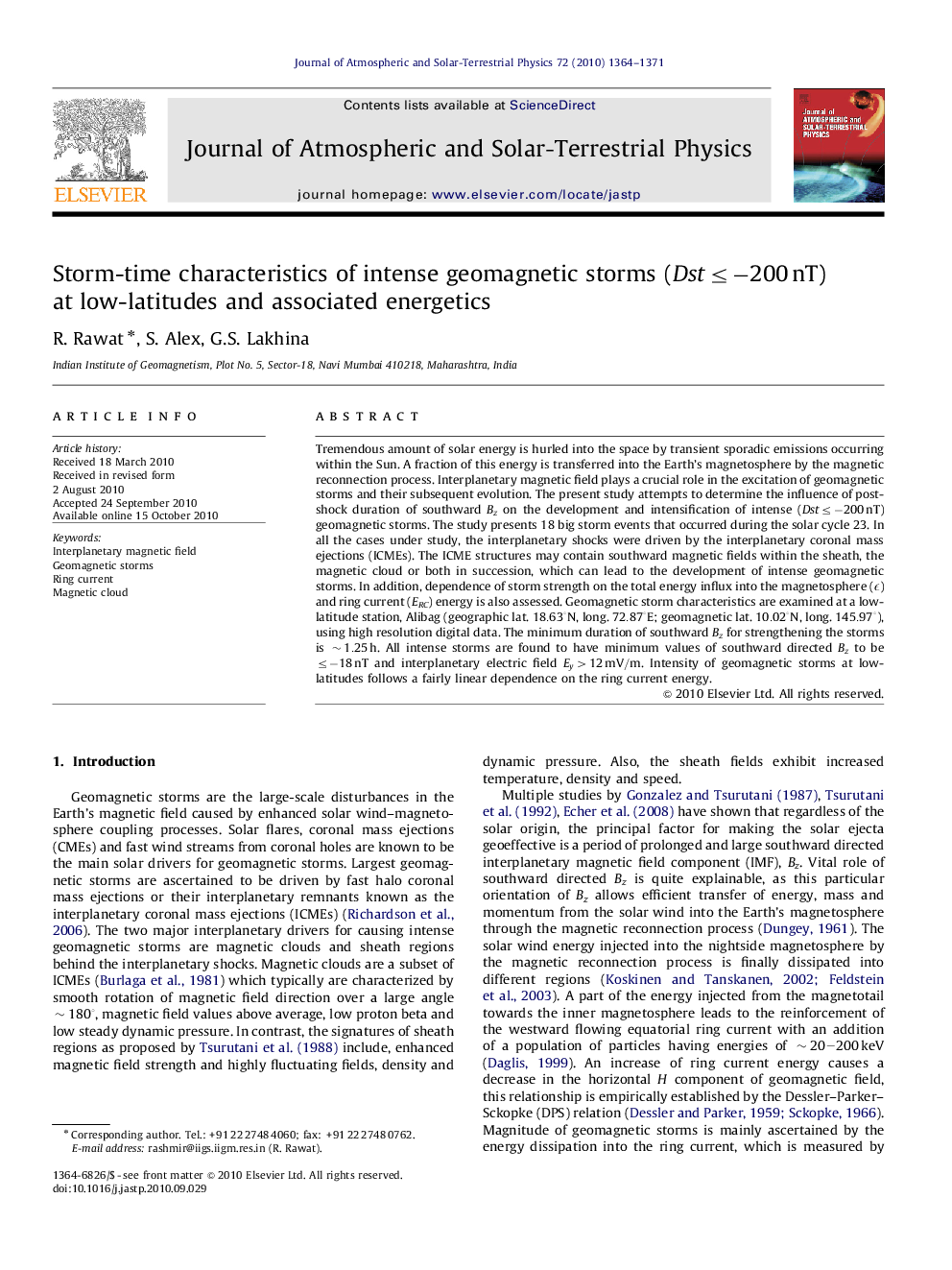| Article ID | Journal | Published Year | Pages | File Type |
|---|---|---|---|---|
| 1777073 | Journal of Atmospheric and Solar-Terrestrial Physics | 2010 | 8 Pages |
Tremendous amount of solar energy is hurled into the space by transient sporadic emissions occurring within the Sun. A fraction of this energy is transferred into the Earth's magnetosphere by the magnetic reconnection process. Interplanetary magnetic field plays a crucial role in the excitation of geomagnetic storms and their subsequent evolution. The present study attempts to determine the influence of post-shock duration of southward Bz on the development and intensification of intense (Dst≤−200nT) geomagnetic storms. The study presents 18 big storm events that occurred during the solar cycle 23. In all the cases under study, the interplanetary shocks were driven by the interplanetary coronal mass ejections (ICMEs). The ICME structures may contain southward magnetic fields within the sheath, the magnetic cloud or both in succession, which can lead to the development of intense geomagnetic storms. In addition, dependence of storm strength on the total energy influx into the magnetosphere (ϵϵ) and ring current (ERC) energy is also assessed. Geomagnetic storm characteristics are examined at a low-latitude station, Alibag (geographic lat. 18.63∘N18.63∘N, long. 72.87∘E72.87∘E; geomagnetic lat. 10.02∘N10.02∘N, long. 145.97∘145.97∘), using high resolution digital data. The minimum duration of southward Bz for strengthening the storms is ∼1.25h. All intense storms are found to have minimum values of southward directed Bz to be ≤−18nT and interplanetary electric field Ey>12mV/m. Intensity of geomagnetic storms at low-latitudes follows a fairly linear dependence on the ring current energy.
Research highlights► Dominant significance of IMF Bs southward directed IMF Bz magnitude and duration for storm intensification. ► Threshold values of Ey and Bs during storm period for different storm magnitudes. ► Geomagnetic activity substantially influenced by dynamic pressure with large Bs. ► Magnetic cloud driven storms have higher energy input (ε) and ring current energy.
